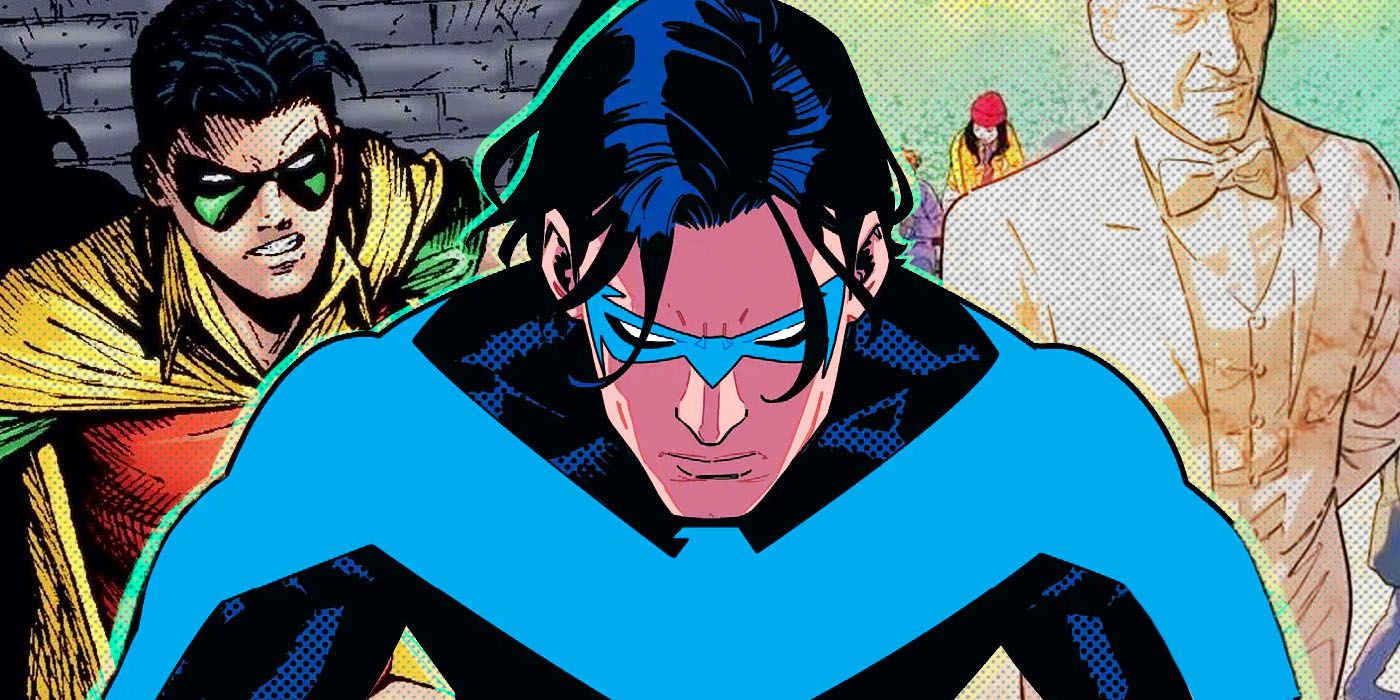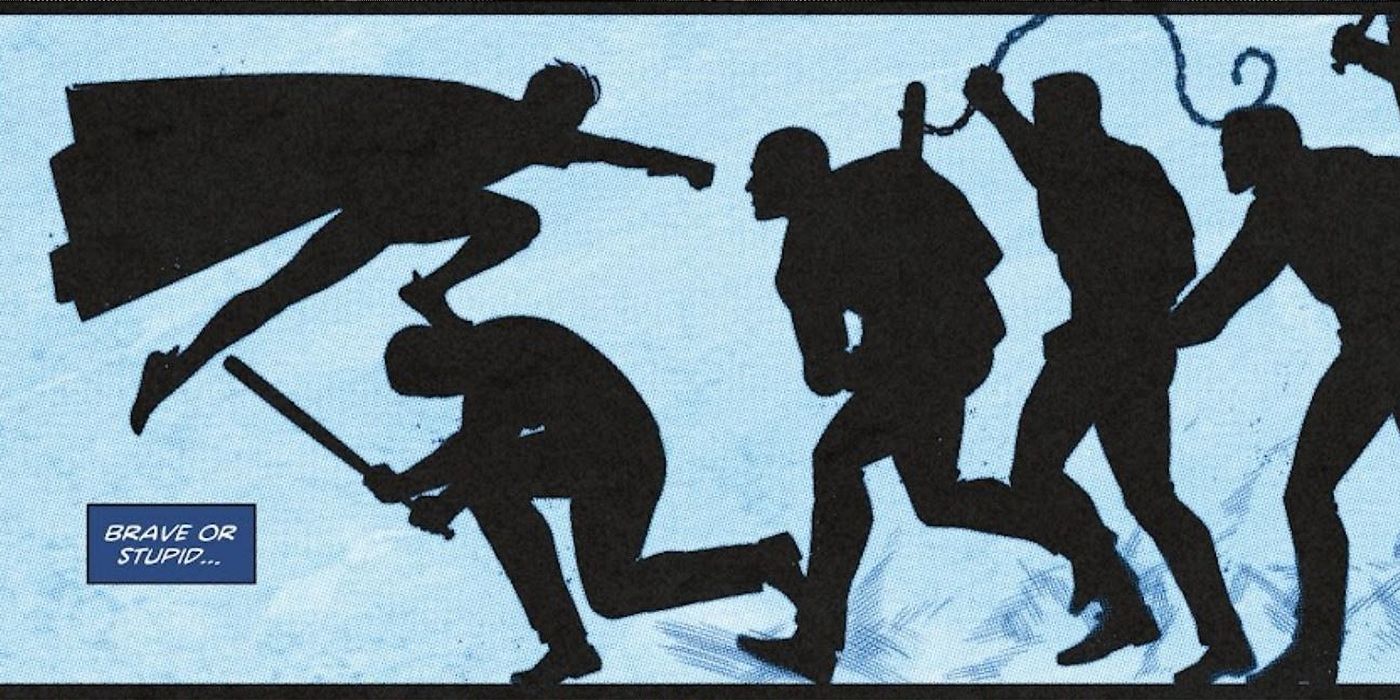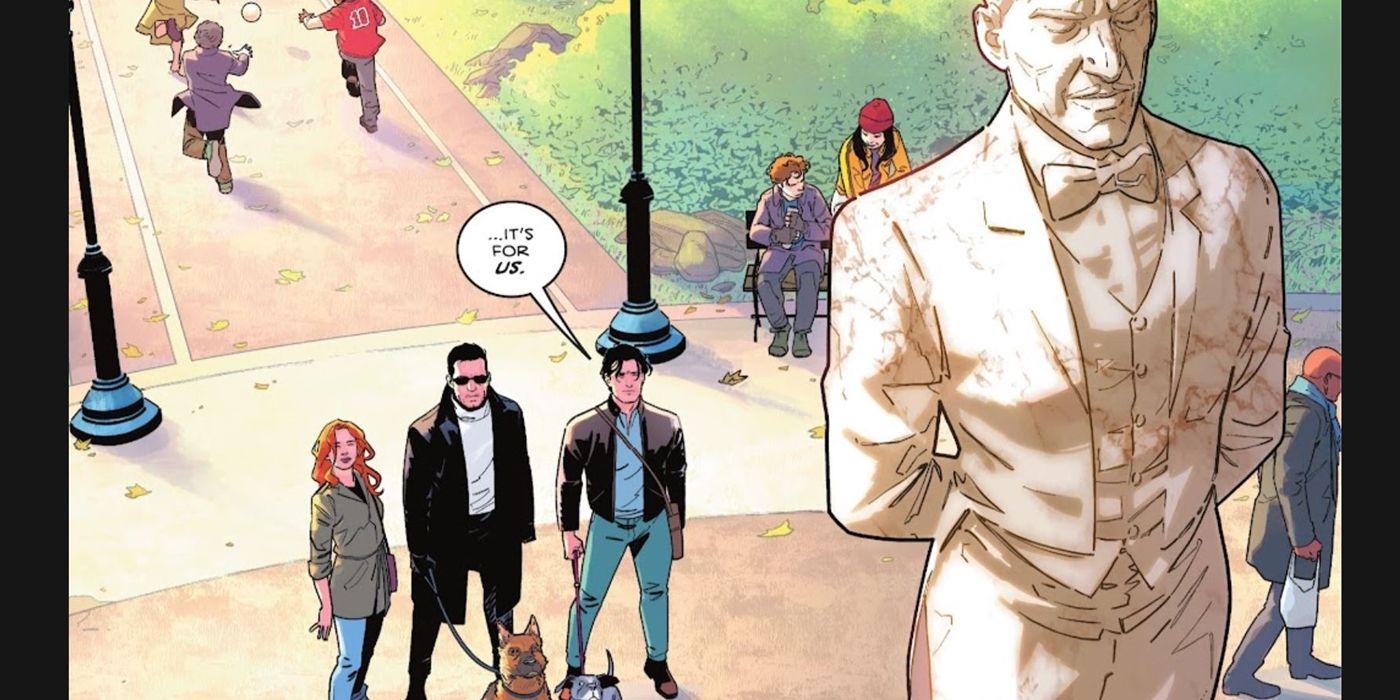The following contains spoilers from Nightwing #92, on sale now
Detective Comics #38 (by Bill Finger, Bob Kane, and Jerry Robinson) was one of the first comic books to truly act upon the plethora of child fans that followed the medium. It introduced a sidekick to one of its most successful comics, the detective and superhero known as The Batman. The Boy Wonder, Robin, played off of Batman's dark seriousness, allowing kids to see a hero like themselves fighting for good alongside the caped crusader. That, however, was nearly a century ago, and things have changed massively for Dick Grayson.
As the decades have passed, Robin has grown out of the shadow of his mentor even as he keeps to the shadows for the most part in his superheroism. The baton-wielding Nightwing exchanged his cape and tights for a full uniform, and he has fought many battles that would put his mentor to shame. The Eisner-nominated run has gone to great lengths in its newest issue to demonstrate that Nightwing is a very different man than he was. What's more, though, is that Bruno Redondo's art, used to genre-defying effect already in this run, perfectly echoes Tom Taylor's story to show how the character of Nightwing and the medium of comics have changed throughout the years.
Nightwing Begins with Pre-Digital Comic Art
The first bit of Nightwing #92 begins in a throwback. Redondo's art style is recognizable and consistent, but the coloring is... off. Most comics of the information age are very nearly perfect. Colors fill up the background and the characters fully. However, older comics used small dots rather than printing pixels, and the result is a much less consistent shading and color. This style of printing was recreated in the first part of Nightwing #92. This was a brilliant way of establishing that this is a very old part of the story. What's more relevant, though, is that it's obsolete.
In this portion of the story, Dick Grayson, as Robin, jumped down on a gang and attempted to rout them, but his inexperience and lack of backup wind up causing the young hero to be kicked by the gang members. As the art reflected, this is long ago and the young Robin, as well as his cowled mentor, have quite a bit to learn. The intervention of Alfred at this point was especially poignant given the fact that the man's death began Dick's current mission in Blüdhaven.
Nightwing Moves Forward But Keeps One Eye on the Past
It's very important that Nightwing #92 began in the past, as the comic moved on to recognize the past through Dick Grayson's eyes. Alfred's statue loomed large against a part of Blüdhaven that he essentially helped to build. Nightwing finally featured an appearance by Batman as well. Ace was even along for the ride, another revisitation of classic Batman characters. Jon Kent's Superman appeared and saved the day. The modern art style showed that the story was now taking place in the present, but it's all about the past and honoring it while moving forward.
One of the best ways that this mixture of moving forward while looking back is demonstrated in Issue 92 is in the fight at the end. Dick Grayson was in a similar situation as he was at the beginning of the text. However, he was now relying upon help from his allies rather than denying them. He was careful, cool, calculated, and just a very good fighter. As this was ongoing, however, the Boy Wonder disappeared from the panels as 1960s Adam West era Booms and Whams suddenly appeared.
This particular issue of Nightwing is about the past. It's a very careful balance, however, of remembering and honoring the past without being beholden to it. Popular culture often goes through big changes, from the death of the Justice League to the recasting of Percy Jackson characters. Often, comic books suffer from either being too ready to move on or too afraid of change. Nightwing #92 has demonstrated that hitting a happy medium is possible, even as it's not always painless.



